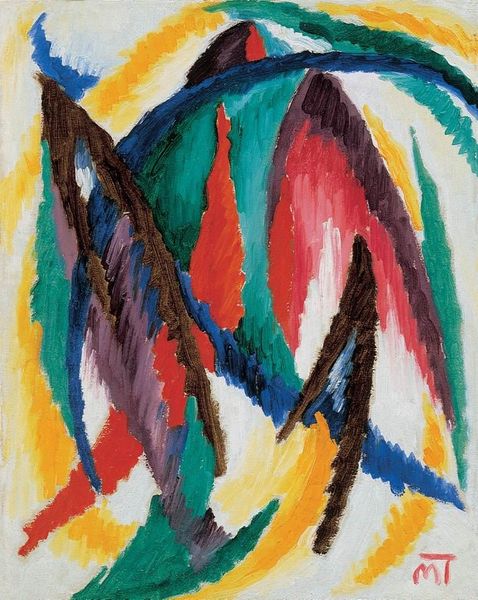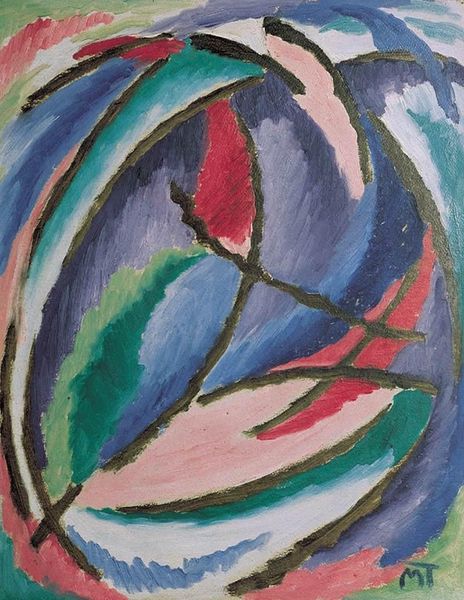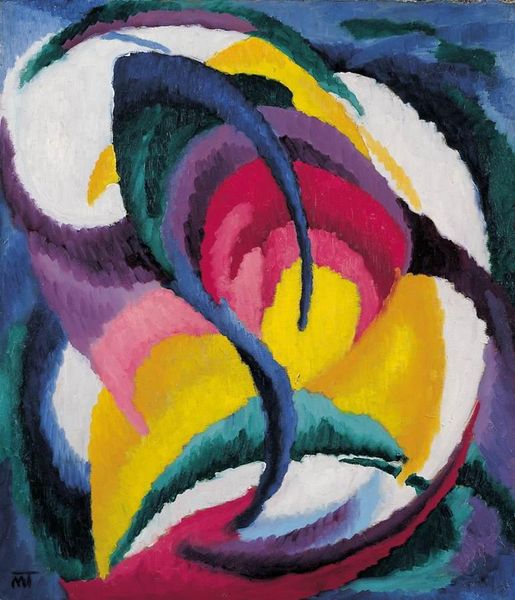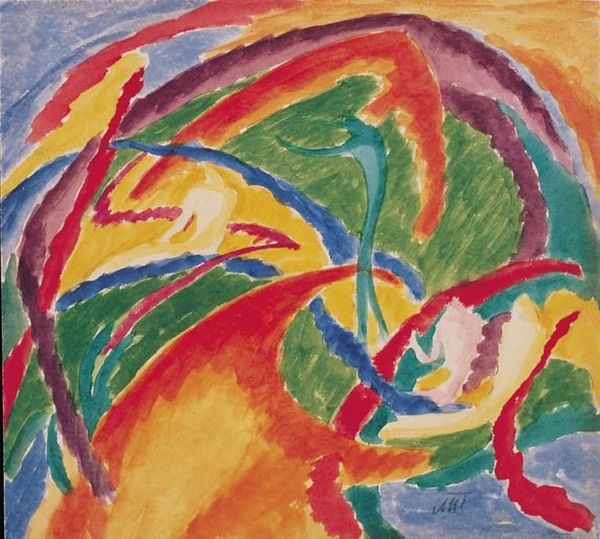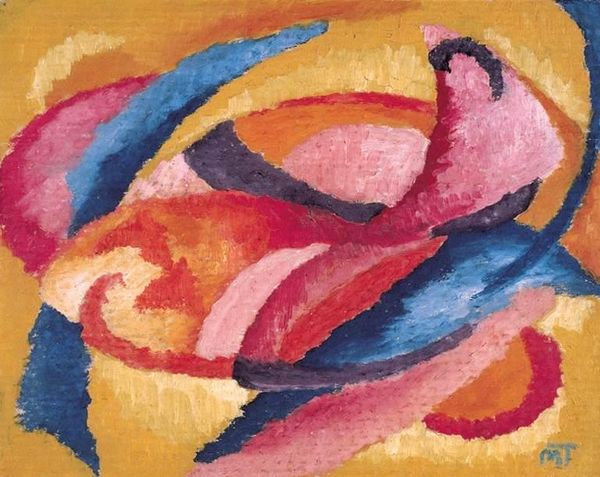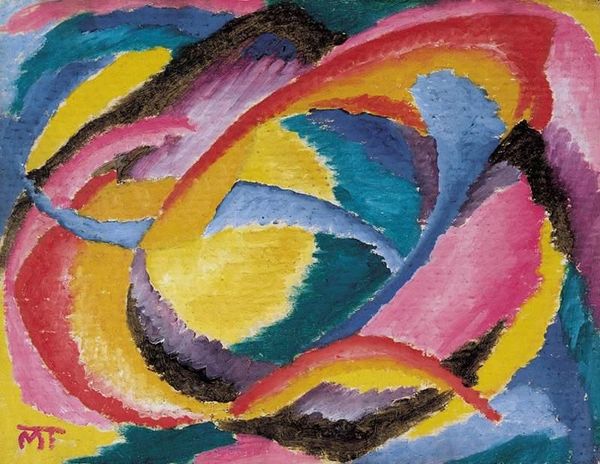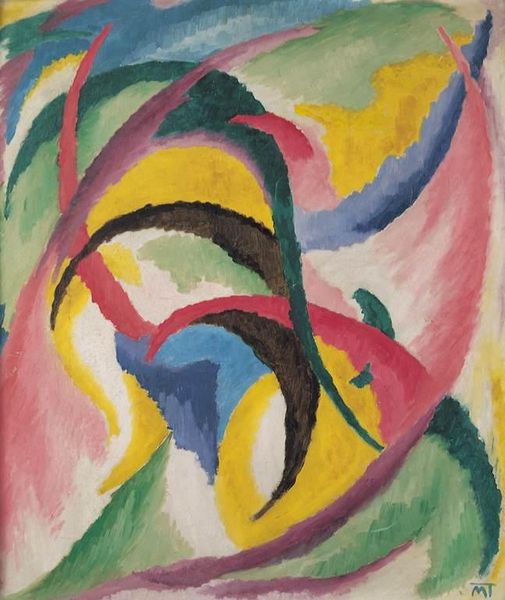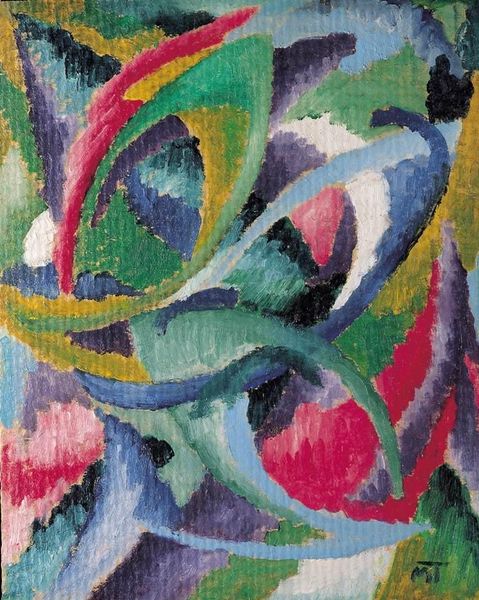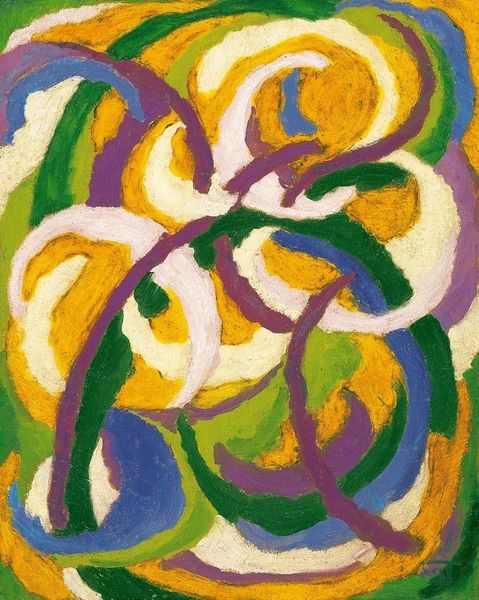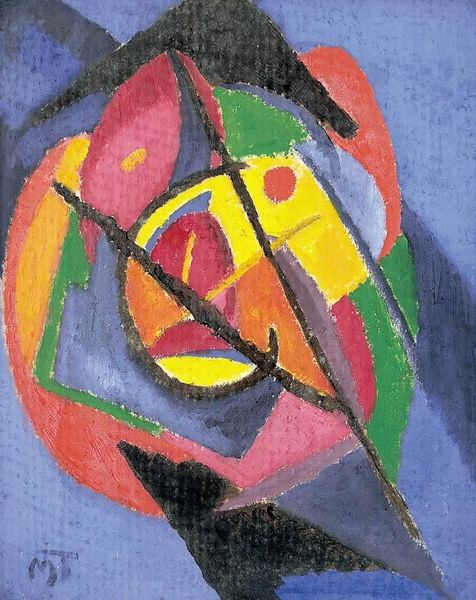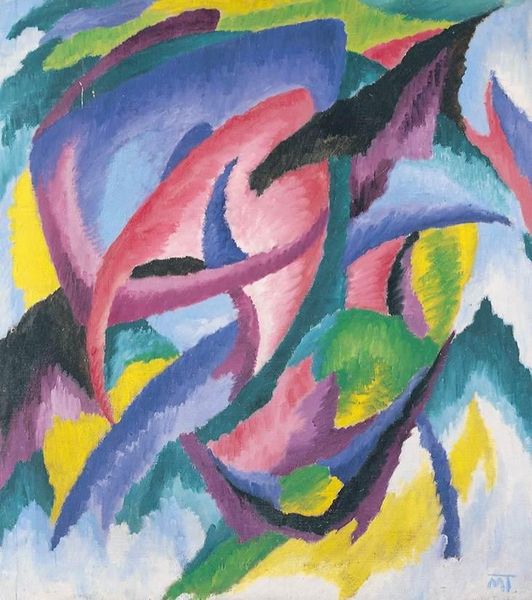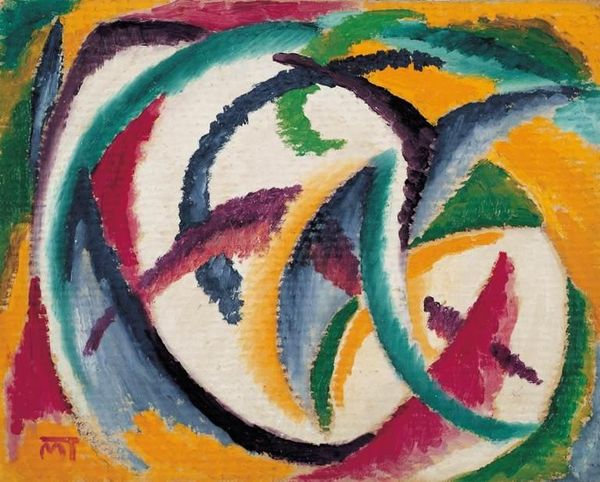
painting, oil-paint
#
abstract expressionism
#
abstract painting
#
painting
#
oil-paint
#
abstract pattern
#
geometric
#
expressionism
#
abstraction
#
line
#
expressionist
Copyright: Public domain US
Curator: What a fascinating painting! Janos Mattis-Teutsch's "Composition," painted in 1919, just vibrates with color and energy. Editor: My first impression is almost visceral. It's chaotic, yet controlled. All these stripes of vibrant oil paint pull you in, and those almost aggressive green lines slash across the canvas, adding a jarring note. Curator: Let's delve into the material qualities first. Notice how thickly the oil paint is applied? The brushstrokes themselves create a texture, adding another layer of information. Mattis-Teutsch, during this period, was heavily influenced by Expressionism, but also by a sort of spiritual seeking. How does the use of materials speak to that context? Editor: I think it mirrors the inner turmoil of the time. Remember, 1919 was right after the end of the First World War. Expressionism as a movement really blossomed in response to the horrors of industrialized warfare, and I think it created space for exploration of emotion on canvas. These intense colors, that jagged, almost violent composition, communicate the unease of a generation grappling with trauma. Curator: Exactly! And the very act of applying paint in this almost frantic way becomes part of the message. There's no hiding the artist's hand. Consider also, abstraction became popular at this point as a political move: The artists removed subject matter in protest against academic painting that was preferred by powerful institutions. It was about access to art creation. Editor: Yes, it was an incredibly fertile period for reassessing the relationship between art, the artist, and the public. Did Mattis-Teutsch's background – what social circles did he navigate? It has such an impact on how paintings like this one can exist. I agree, those bold stripes are also really jarring—not just the form but also how the materiality and production came about. I appreciate that. Curator: Mattis-Teutsch moved within progressive artistic circles, so the context of production of such work becomes evident in our evaluation. I find it compelling how all those factors converge to produce this visually stunning—but also unsettling—painting. Editor: Absolutely. I feel I’ve understood the work—its mood, its intent, its place in art history—more deeply through our dialogue today. Curator: Agreed. Considering both its materiality and social background has enhanced my appreciation too.
Comments
No comments
Be the first to comment and join the conversation on the ultimate creative platform.
